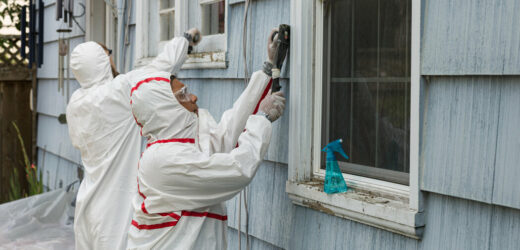The Biden administration on Wednesday proposed to strengthen requirements for the removal of lead-based paint in homes and child care facilities built before 1978 to try to eliminate exposure to lead, which can damage the brain and nervous system, particularly in children.
If finalized, the Environmental Protection Agency estimates that the regulation would reduce exposure to lead for as many as 500,000 young children per year.
“There is no safe level of lead,” said Michal Freedhoff, the Environmental Protection Agency’s assistant administrator for the office of Chemical Safety and Pollution. “Even low levels are detrimental to children’s health, and this proposal would bring us closer to eradicating lead-based paint hazards from homes and child care facilities across the U.S. once and for all.”
The new limits could require millions of homeowners and hundreds of thousands of child care facilities to check for dust and pay for abatement. “It dramatically increases the number of facilities that could be required to inspect and remediate lead paint hazards,” Ms. Feedhoff said.
The federal government banned lead-based paint for residential use in 1978. But the E.P.A. estimates that 31 million dwellings built before that contain lead-based paint, 3.8 million of which are home to one or more children under the age of 6.
Lead dust commonly occurs when paint deteriorates or is disturbed, and young children are at particularly high risk of exposure because of activities like crawling and hand-to-mouth play. Lead poisoning can cause behavioral problems, learning disabilities and a decline in measured intelligence levels.
Under the proposed regulation, any amount of lead dust in floors and window sills would qualify as “hazardous” and require abatement, compared with the current “hazardous” standard of 10 micrograms per square foot for floors and 100 micrograms per square foot for window sills. It would also lower the amount of lead dust that can legally remain in dust on floors, window sills and window troughs after removal activities.
The regulation would apply to facilities regularly used by children 6 years old or younger, including child care centers, preschools and kindergarten classrooms.
The proposed rule change is the result of a May 2021 opinion by the United States Court of Appeals for the Ninth Circuit in response to a complaint against the E.P.A. filed by multiple environmental and health groups.
“This is a leap forward in the country’s long-delayed efforts to eliminate lead exposures in millions of residences and child care facilities that still have lead-based paint,” said Eve Gartner, director of toxics strategies at Earthjustice, which has represented some of those plaintiffs. “Our clients in these lawsuits are grateful and look forward to expedited finalization and implementation of this important rule-making.”
Coral Davenport covers energy and environmental policy for the climate desk from Washington. She was part of a Times team that was a finalist for the Pulitzer Prize for distinguished public service journalism in 2020, and part of a Times team that received Columbia University’s John B. Oakes award for distinguished environmental journalism in 2018. More about Coral Davenport
Source: Read Full Article


